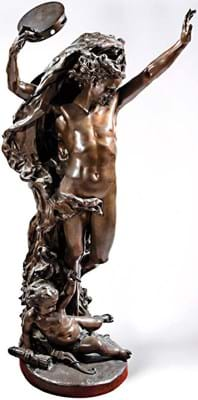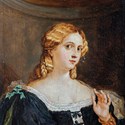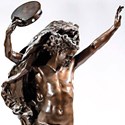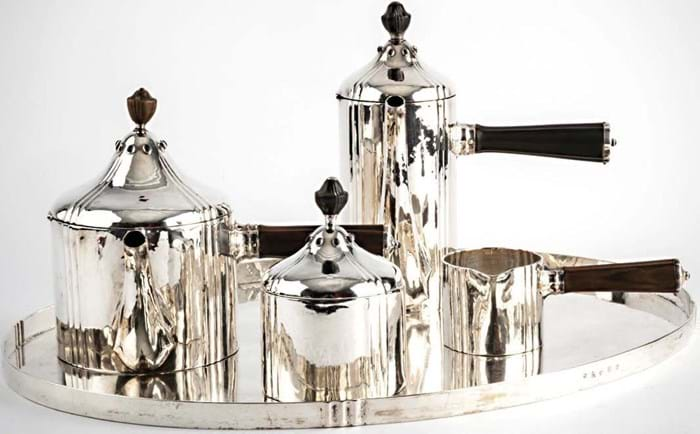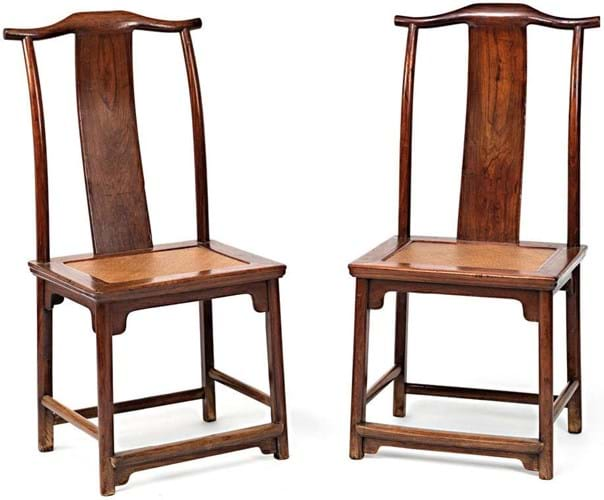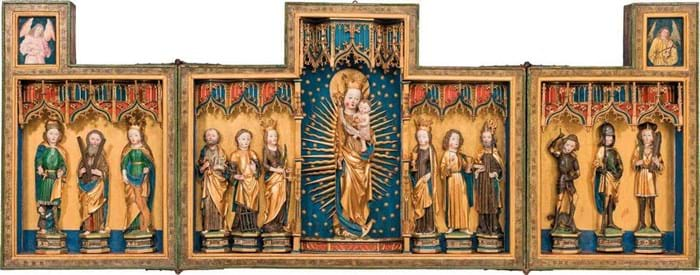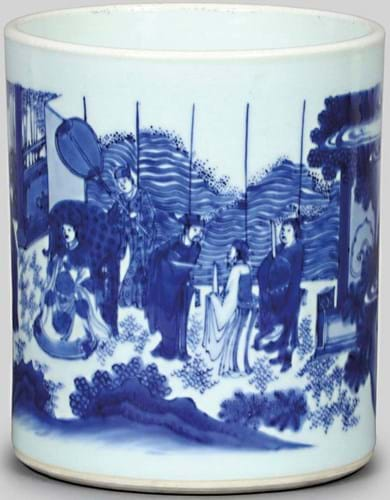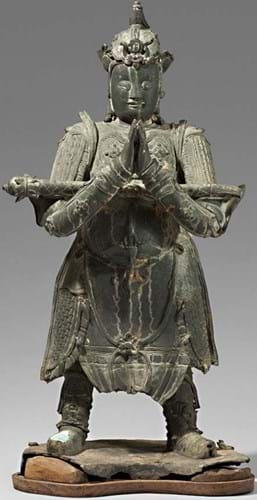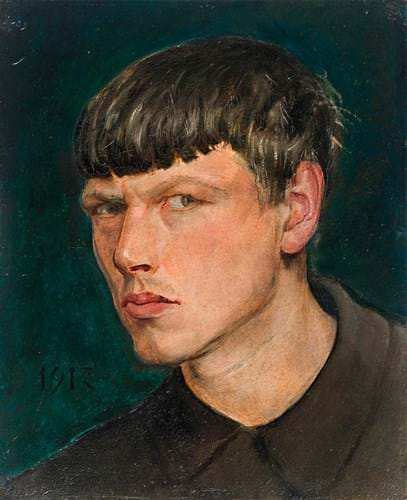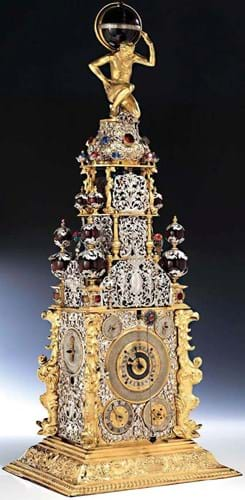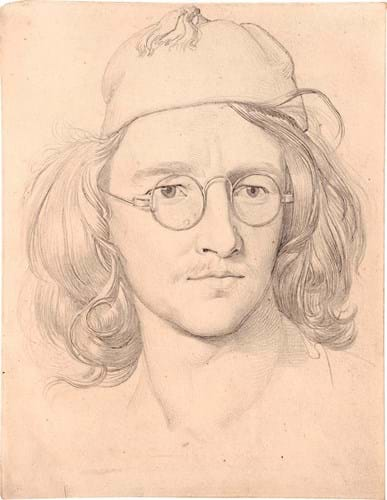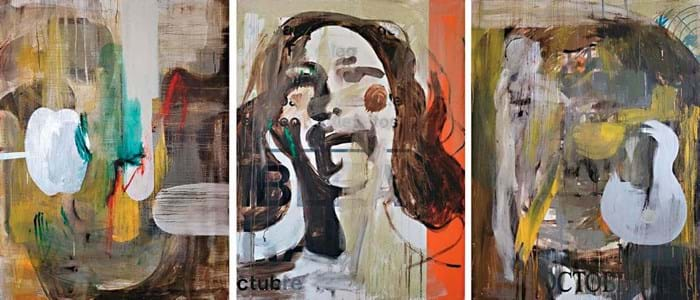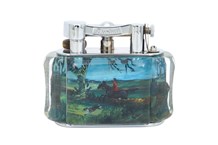Not so true blue but a good copy
The biggest surprise at the auction at Dr Fischer (24% buyer’s premium) in Heilbronn on December 11 was the result for a 19th century copy of a painting by Jacopo Negretti, known as Palma il Vecchio.
The original of Young Woman in a Blue Dress, one of Palma’s portraits of young beauties and possibly a depiction of his wife, belongs to the Kunsthistorisches Museum in Vienna.
The copy in the sale measured 7 x 5in (18 x 13cm), less than a third of the original and was guided at just €250-350. In the run-up to the auction there were numerous enquiries, mainly from the Italian trade, and on the day, bidding took off.
After a lengthy exchange between online and phone bidders, a British dealer finally outpaced his competitors with his successful offer of €30,000 (£25,6400).
There was also international interest in the 3ft 5in (1.04m) bronze figure La génie de la danse by Jean-Baptiste Carpeaux. In 1868 the artist had modelled an elaborate relief for the façade of the Parisian opera, several facets of which, personifications of the spirit of dance, he adapted for bronze figures.
A French dealer secured the figure for €20,000 (€17,095), four times the lower guide.
Service please at €80,000
Highlight of the design sale held by Quittenbaum (25% buyer’s premium) in Munich on December 8 was a five-piece Viennese coffee and tea service with corresponding tray from the 1920s.
It was designed by the multi-talented Josef Hoffmann for the Wiener Werkstätte and executed before 1922 by the silversmith Alois Hoppe, who fitted each piece with rosewood handles, finished with a small lapis lazuli cabochon.
The service was accompanied by a second silver tray by another craftsman and was expected to bring €12,000-15,000. In the event, bidding ended only with a hammer price of €80,000 (£68,375), paid by an anonymous buyer.
Hats off to fine chair pair
Asian collectors were very much taken by the refined elegance of a pair of 18th century Chinese chairs on offer at Nagel (25% buyer’s premium) on December 7-8 estimated at €30,000-50,000.
The chairs with woven mat seats are known as Guanmaoyi, which translates as ‘official’s hat chair’. Their shape is reminiscent of the winged hat worn by Ming officials on formal occasions. These chairs were made of Huanghuali wood, which was highly prized in China and used primarily for high quality furniture.
The guide was passed quickly as the bidding took off. At €230,000 (£196,580) the successful Asian buyer placed his final bid.
Down on the farm amid snowdrifts

'Wilder Kaiser mit Bauernhof im Winter' (Wilder Kaiser Mountain with Farmhouse in Winter) by Alfons Walde, €630,000 (£538,460) at Dorotheum.
A perennial favourite at the Modern art sales of Dorotheum (28/25/22% buyer’s premium) in Vienna are paintings by the Austrian artist Alfons Walde (1891-1958), whose alpine winter landscapes regularly achieve six-figure prices.
In June, the auction house set an international auction record for the artist when it sold Der Aufstieg der Schifahrer (The ascent of the skiers) from c.1927 for the top price of €800,000 (£683,760).
On November 30 there was more proof that the artist can consistently charm collectors. On offer was the 16in x 2ft 2in (42 x 67cm) motif Wilder Kaiser mit Bauernhof im Winter (Wilder Kaiser Mountain with Farmhouse in Winter), which was estimated at €280,000-450,000. It was probably painted in the early 1930s and was now sent for sale by a Czech collector, whose family had purchased the painting at the winter sport mecca Kitzbühel, where Walde found many of his clients.
After a prolonged tussle, an anonymous bidder sealed the deal at €630,000 (£538,460).
Much-travelled altar finds a new home
A late 15th century altar took top honours at Kinsky (25/15% buyer’s premium) in the sale of December 14-17.
At the centre of the 12ft 4in (3.77m) wide altar, which is dated 1479, is a carved figure of the Madonna, flanked on each side by sculptures of six saints.
It was created for the church of St Laurentius in the village of Schwarza in Thuringia and is the work of the so-called Schwarzaer Meister, about whom virtually nothing further is known. Towards the end of the 19th century, the altar was removed from the church and came into the possession of the princely family of Schwarzburg-Rudolstadt and hung in their castle chapel. After the end of the First World War, when many noble families had their properties confiscated, the altar was sold to a Dutch dealer.
For many decades, its whereabouts were unknown, until it was bought by a Viennese dealer in the early 1960s. His son now consigned the altar to Kinsky, where it was estimated at €250,000-500,000. On auction day in Vienna, bidders from several countries joined in the action, until the buyer secured their prize for the upper estimate of €500,000 (£427,350).
In the golden age

A gold necklace set with a large layered agate from 3500-539BC, €105,000 (£89,745) at Hermann Historica.
The top lot of the sale held by Hermann Historica (20% buyer’s premium) in Grasbrunn, just to the south of Munich, was certainly the oldest. It was a gold necklace set with a large layered agate.
It was created by a craftsman from the Elamite Kingdom which flourished in what is now Iran and southern Iraq between 3500-539BC, at which time the already weakened kingdom was incorporated into the Median Empire of the Iranian peoples.
The 8½in (22cm) long necklace, which came from a private collection in Geneva, could be dated to the second pre-Christian millennium and was expected to bring €90,000. In the event, the international buyer, who defeated his competitors, was taken to €105,000 (£89,745) before he could claim his piece of antiquity.
Brush with great success
Moderately guided Chinese works of art caused something of a stir at Arnold (16% buyer’s premium) in Frankfurt on November 20.
First up was a Song Dynasty celadon bowl, which was knocked down for €10,000 (£8550), 10 times the starting price.
Even more interest emerged for an 8in (21cm) high brush holder (bi-tong) which was dated to the mid-17th century, during the so-called transitional period from the Ming to the Qing dynasties.
It was decorated in blue and white with Chinese dignitaries in a landscape and was once sold by the now closed renowned gallery of Edith and Joel Frankel in New York. In 1994 the gallery priced it at $6800; now it had a tempting reserve of €1200.
Many bidders saw their chance and drove the price to a much more substantial €55,000 (£47,010). The buyer, not surprisingly, was Asian.
Chinese deity in great demand
Even though some of the prime lots – including the bronze figure of Avalokiteshvara Ekadashamukha previewed in ATG No 2520 – failed to find takers, there were several surprises at the Asian art sale at Lempertz (25% buyer’s premium) in Cologne on December 11.
A 3ft 4in (1.02m) high, 17th-18th century bronze figure of the guardian deity Weituo (right), one of the protectors of Chinese Buddhist monasteries, was in great demand, going from €4000 to €55,000 (£47,010).
Worthy of note was the interest for Japanese works of art. Particularly sought-after was the ivory netsuke of a seated tiger from c.1780.
Style and finish were characteristic for the Kyoto School and the tiger was attributed to the renowned craftsman Yamaguchi Okatomo.
Bidders from several quarters pushed the price from the guide of €8000 to a final result of €30,000 (£25,640).
What do I hear for this figure?

13th-early 14th century stoneware figure of the Buddhist sage Arhat Nagesana, SFr320,000 (£260,160) at Koller.
As was to be expected, Asian buyers were active at Koller (25/20/15% buyer’s premium) in Zurich on November 30.
One of their acquisitions was a 19in (48cm) high, 16th century copper alloy figure of a standing Buddha. The Nepalese, partly gilt figure went well above the guide of SFr30,000-50,000 to sell for SFr85,000 (£69,105).
The highlight of the sale was an 18in (45cm) stoneware figure of the Buddhist sage Arhat Nagesana (right), which can be dated to late 13th-early 14th century, to the late Song or early Ming dynasty. According to legend, the seated scholar is cleaning his ear, so that he can hear the truth more clearly.
Asian collectors put in a lot of effort, but in the end, it was a Swiss collector who was the most determined: the hammer of SFr320,000 (£260,160) was over three times the lower guide.
£1 = SFr1.23
Early Dix depicted by his own hand
With four lots achieving seven-figure prices, Grisebach (25% buyer’s premium) in Berlin had good reason to be satisfied with the course of its auction of selected works on December 2.
While the major interest for top-quality works by Max Beckmann and Emil Nolde, both of which doubled their guides to sell for €1.9m (£1.62m) and €2.3m (£1.97) respectively, was to be expected in today’s market, the price of €1m (£854,700) for László Moholy-Nagy’s 1930s mixed-media object Space Modulator Experiment, Aluminium 5 was more of a surprise.
No one, however, could have predicted the demand for a self-portrait by Otto Dix. His 14 x 12in (36 x 30cm) Selbstbildnis was painted in oil on paper, mounted on cardboard and dated 1913.
Dix had embarked on his artistic career only in 1910, so that this portrait marked an early milestone in his development. It had belonged to the same family in the Rhineland since at least 1964 and was well documented in numerous publications.
The estimate was set at €200,000-300,000, but the international competitors pushed the price ever upwards. At €1.3m (£1.11m) they were eventually outpaced by a Turkish collector.
Striking example of astronomical clock
A highly complex and exorbitantly decorated astronomical clock brought a corresponding price in the December 9 auction at Hampel (25% buyer’s premium) in Munich.
The well documented clock was completed in 1705 by Hyeronimus Syx as his masterpiece. The rules of the clockmakers’ guild, which in Augsburg had remained unchanged since 1577, stipulated that masterpiece clocks must have hour and quarter-striking, an astrolabe, a calendar with indications of the planets and the signs of the Zodiac. Furthermore, the clock had be completed within six months.
The strict application of the regulations meant that 18th century craftsmen in Augsburg had to build timekeepers of an antiquated appearance. Be that as it may, Syx not only fulfilled all the technical requirements: his 2ft 7in (79cm) high tower clock of silver and gilt brass was additionally decorated with a special type of ruby glass known as Kunckelstein after its 17th century inventor, Johannes Kunckel.
The clock was last on the market in 2018, when it came up for sale at Christie’s in London (ATG No 2346). Hampel’s estimate was €450,000-550,000. The closing bid from its new owner, an international collector, was €518,000 (£442,735).
Artist with specs appeal
On December 1, Bassenge (23% buyer’s premium) in Berlin achieved several remarkable results for early 19th century drawings.
Along with numerous other German artists of his time, Joseph von Führich travelled extensively throughout Italy and in 1828-29 he drew a pencil portrait of his painter colleague Adolf Zimmermann, one of his travelling companions, which was on offer for €7500.
There was sustained bidding from many countries which culminated in a hammer price of €50,000 (£42,735), at which point a British collector outpaced the competition.
That was, however, modest in comparison with the frenetic action, when Führich’s Self-Portrait with Glasses executed in Rom on March 26, 1829, was offered.
The starting price of €35,000 meant nothing to the bidders, who drove the price to €210,000 (£179,490). A European collector had the greatest staying power.
Ketterer’s most expensive work of art
Like its competitor Grisebach in Berlin, Munich auction house Ketterer (25% buyer’s premium) could boast a handful of six- and seven-figure results at its evening sale of Modern art on December 10.
Star of the show was a monumental triptych executed in 1988 by the German artist Albert Oehlen. His work generally defies classification, incorporating numerous styles, including ‘bad painting’. Each of the three mixed-media wood panels measured 6ft 7in x 4ft 11in (2 x 1.5m). The central motif was a woman’s head, flanked by abstract compositions.
The buyer, a collector from the Benelux, was prepared to go way above and beyond the guide of €1.5m: his winning bid was €3m (£2.56m). That made Oehlen’s painting the most expensive work of art ever sold at Ketterer.
£1 = €1.17



